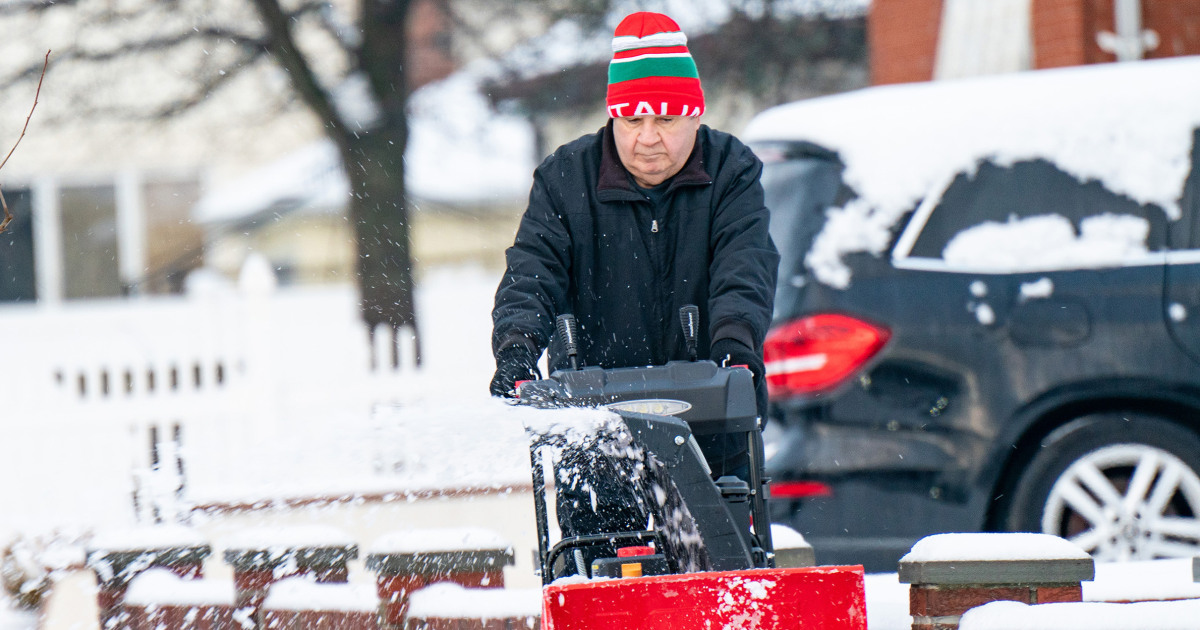Unraveling the Chilling Forecast: Winter Storms Set to Grip the U.S.
As we step into the heart of winter, a series of winter storms are poised to sweep across the United States, bringing with them heavy snowfall, plunging temperatures, and widespread travel disruptions. Residents from the Northeast to the Midwest and even into the Southern states brace for these meteorological events, raising concerns about safety, accessibility, and the overall impact on daily life. The coming days and weeks promise a mix of beauty and peril, as nature showcases its power while also challenging our routines.
Understanding Winter Storms and Their Impact
Winter storms can vary significantly in intensity and impact. They typically involve a combination of snow, ice, sleet, and freezing rain, each contributing to hazardous conditions. The National Weather Service defines a winter storm as any combination of snow, ice, and strong winds that can create dangerous conditions. As these storms develop, they can lead to:
- Heavy Snowfall: Accumulations can exceed several inches in just a few hours, creating treacherous road conditions.
- Ice Accumulation: Freezing rain can lead to ice-covered roads and power lines, increasing the risk of accidents and outages.
- Wind Chill: Plummeting temperatures combined with wind can create dangerously low wind chill readings, posing health risks to exposed skin.
The impending winter storms are expected to affect millions across the country, with forecasts predicting significant snowfall that could reach as much as 24 inches in some areas. As winter storms set to grip the U.S., it’s crucial to stay informed and prepared.
Preparing for the Storms
Preparation is key when it comes to winter weather. Here are some essential tips to help residents brace for the impending storms:
- Stay Informed: Regularly check local weather forecasts and updates from the National Weather Service. Awareness is your first line of defense.
- Emergency Kits: Assemble a winter emergency kit that includes essentials such as food, water, medications, battery-powered radios, and flashlights.
- Vehicle Preparedness: Ensure your vehicle is winter-ready with proper tires, antifreeze, and a winter survival kit that includes blankets, snacks, and a shovel.
- Home Safety: Keep heating systems in good working order, check for drafts, and stock up on heating fuel if necessary.
By taking these proactive measures, individuals and families can mitigate some of the risks associated with winter storms.
Travel Disruptions and Safety Concerns
With winter storms set to grip the U.S., travel disruptions loom large. Airlines are already adjusting schedules, and major highways may experience closures due to snow and ice. Here’s what travelers need to know:
- Flight Cancellations: Airlines often cancel or delay flights in anticipation of severe weather. Travelers should monitor their flight status and consider rebooking if necessary.
- Road Conditions: State and local transportation departments will provide updates on road conditions. Avoid unnecessary travel during severe storms.
- Emergency Services: In case of emergencies, keep emergency contact numbers handy and ensure your phone is charged.
As tempting as it may be to venture out, prioritizing safety is essential. If travel is unavoidable, consider using public transportation, which may be better equipped to handle winter conditions.
The Economic Impact of Winter Storms
Beyond the immediate effects on travel and safety, winter storms can have a broader economic impact. Businesses may face closures, and supply chains can be disrupted, particularly in regions heavily reliant on transportation. Here are some economic factors to consider:
- Retail and Service Industries: Snowstorms can lead to decreased foot traffic in retail stores and restaurants, affecting sales.
- Logistics and Shipping: Companies relying on timely shipping may experience delays, leading to increased costs and customer dissatisfaction.
- Utility Expenses: Increased demand for heating can spike utility costs, impacting household budgets.
Moreover, states may incur additional costs for snow removal and emergency services, straining budgets and resources.
Community Support and Resilience
In times of severe weather, community support becomes paramount. Neighbors often band together to assist one another, whether through sharing resources or helping with snow removal. Here are some examples of community resilience:
- Local Shelters: Communities can set up temporary shelters for those without heating or safe housing.
- Food Drives: Organizing food drives can help support those facing food insecurity during storms.
- Neighborhood Watch: Establishing check-in systems for vulnerable neighbors can ensure that everyone is safe and accounted for.
These examples highlight that while winter storms can be challenging, they also foster a spirit of cooperation and community resilience.
Looking Ahead: The Importance of Climate Awareness
As climate change continues to influence weather patterns, understanding and preparing for winter storms is becoming increasingly essential. Researchers suggest that warmer temperatures can lead to more moisture in the atmosphere, potentially resulting in more intense winter storms. This shift emphasizes the need for:
- Public Awareness: Educational campaigns about winter preparedness can save lives and property.
- Infrastructure Investment: Governments investing in better snow removal and emergency response systems can enhance community resilience.
- Research and Monitoring: Continuous study of climate trends will help communities adapt to changing weather patterns.
By embracing these strategies, communities can better navigate the challenges posed by winter storms and emerge stronger.
Conclusion
The winter storms set to grip the U.S. serve as a reminder of nature’s power and unpredictability. While the forecasts may sound daunting, preparation, community support, and awareness can make a significant difference. As residents across the nation brace for heavy snowfall and plunging temperatures, it’s vital to prioritize safety and stay informed. Together, we can navigate the challenges of winter weather and look forward to the promise of spring, knowing we faced the storms with resilience and determination.
See more Your Daily Weather



